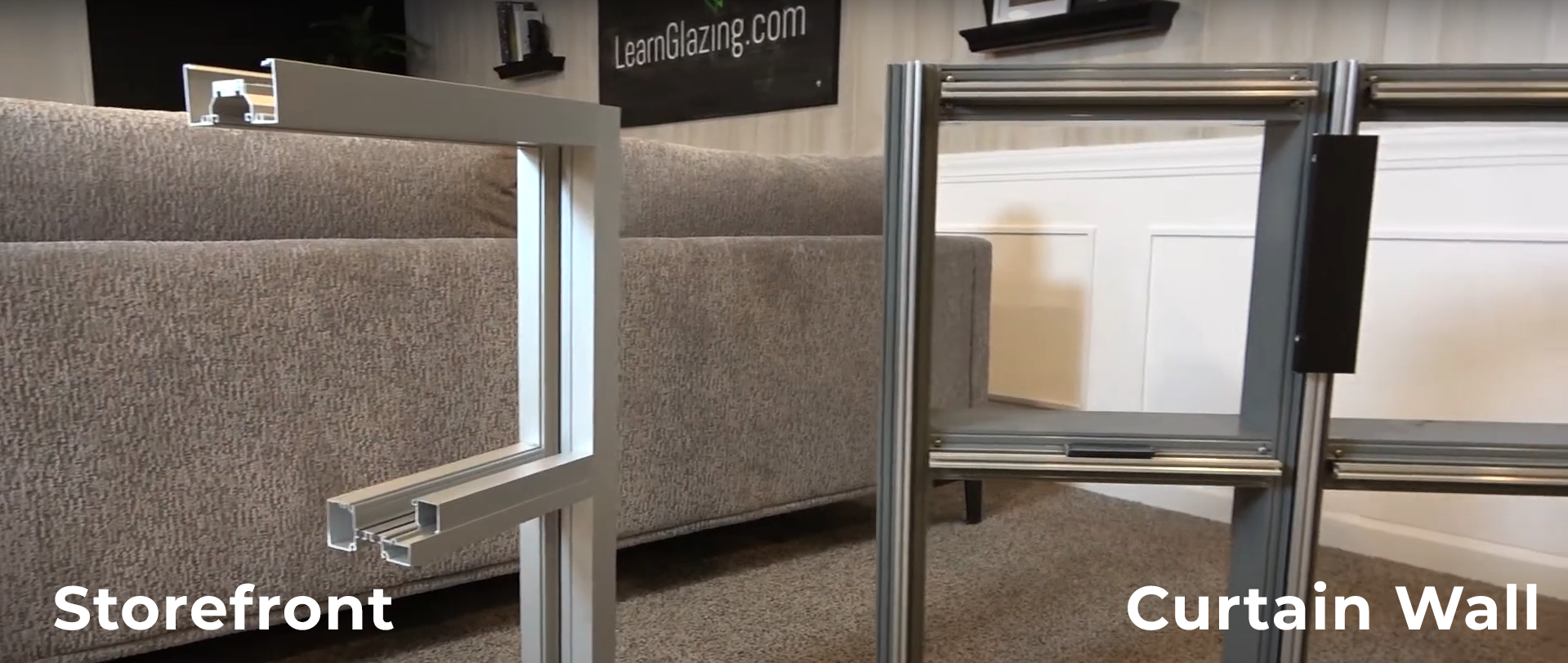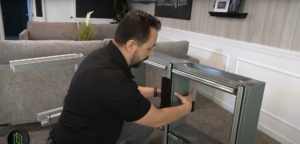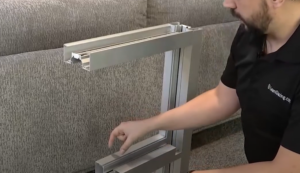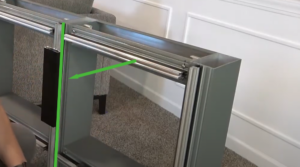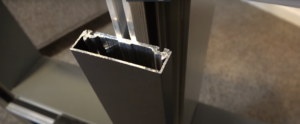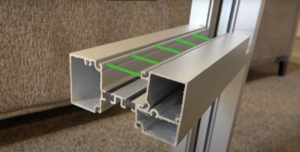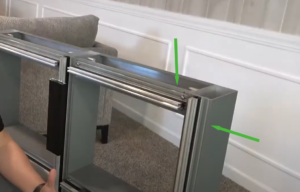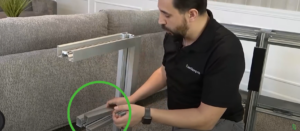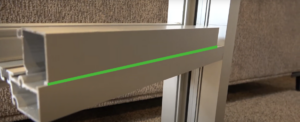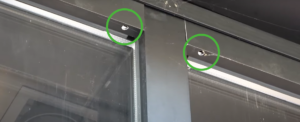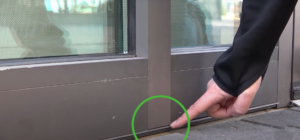Storefront or Curtain Wall? A Step-by-Step Guide to Identifying Commercial Glazing Systems
If you’re new to the glazing industry, you’ve likely wondered: what’s the difference between storefront and curtain wall systems? While our video covers the basics visually, this guide provides a practical, step-by-step method to identify these glazing systems in the field. Let’s dive into how you can quickly determine if you’re looking at a storefront or a curtain wall.
Want a visual explanation?
Check out Alex’s video on the differences between storefront and curtain wall systems.
Step 1: Evaluate the Mullion Depth and Profile
Begin by observing the depth and width of the mullions (the vertical and horizontal framing components).
Curtain Wall: Mullions are deeper and bulkier to handle heavier loads and larger spans. If the mullions are substantial and extruded deeply, you’re likely seeing a curtain wall.
Storefront: Mullions tend to be shallower, lighter, and less bulky. Storefront mullions usually measure around 2 inches in width, whereas curtain wall mullions measure around 2.5 inches or more.
Step 2: Notice Glass Placement
Look carefully at how the glass is positioned within the frame:
Curtain Wall: The glass typically sits more towards the front and is clearly capped from the exterior side. The glass often appears forward-set and supported externally by visible pressure caps.
Storefront: Glass placement usually centers evenly between the exterior and interior edges of the frame. If you notice equal distance from both sides of the glass edge to the front and back, it’s likely a storefront system.
Step 3: Check the Horizontal Framing Details
The horizontal framing elements give clear clues:
Curtain Wall: The horizontal members look identical to the vertical mullions, offering uniform appearance from the outside.
Storefront: Glass placement usually centers evenly between the exterior and interior edges of the frame. If you notice equal distance from both sides of the glass edge to the front and back, it’s likely a storefront system.
Step 4: Identify Water Drainage Systems
Water handling is an important differentiator:
Curtain Wall: Each glazing bay independently manages water, featuring drainage holes at every horizontal member. Look beneath the horizontals; drainage holes indicate a curtain wall.
Storefront: Glass placement usually centers evenly between the exterior and interior edges of the frame. If you notice equal distance from both sides of the glass edge to the front and back, it’s likely a storefront system.
Step 5: Consider Building Type and Size
Lastly, consider the scale and type of building:
Curtain Wall: Usually found on larger buildings, typically multi-story structures with expansive glass panels that span greater heights.
Storefront: Common in smaller-scale commercial buildings, retail spaces, and local businesses, typically limited to ground-level applications.
Ready to learn more?
LearnGlazing.com offers free training courses on this topic and many others, helping you master key glazing concepts. Plus, you can download a certificate of completion at the end!
